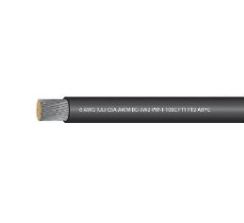
Electrical system maintenance is an especially important part of the upkeep of your boat. It can be difficult, however, to know exactly when it is time to replace one of the core components of the electrical system: boat battery cables. Above and beyond knowing when to replace them, it is important to make sure that you get replacements that suit the needs of your boat. This blog will help you know the right time to get new cables.
The first sign of an electrical issue with your boat is difficulty when starting the engine. If there are lulls when trying to turn over the engine, check the electrical system. While a troubled start doesn’t always indicate bad battery cables, it can certainly be the first clue. Next, you should test a few other properties of the cable to determine if they need to be replaced.
When opening the battery compartment, the most apparent warning that there is an issue with the battery cables is a smell. A strong smell of oxidation or melting rubber are both good signs that there is something wrong with the electrical system, specifically with the cables. Don’t ignore out of place odors when dealing with electrical systems. Next, carefully touch the insulation of each of the cables. If either one is notably hot, there is a good chance that a cable has begun to degrade and is heating up more than it should be. Insulation around the wire should not be hot after running the vehicle for a normal amount of time. You can also check the cables by gently flexing them and listening for a crackling noise. Crackling sounds indicates a degradation of the copper stranding within the cable.
If you’re still having issues, but none of these previous steps turn up any more clues, you might have to move on to more involved testing before replacing your boat battery cables. Using meters to test the voltage and resistance in your cables can be the definitive test if nothing else is clearing up the issue. Cross-reference your battery type with the manufacturers manual for your boat to make sure the output is where it should be. When checking the resistance of your boat’s battery cables, high resistance indicates damaged cables.
If any of these tests point towards a damaged cable, it’s time to replace your cables. It’s always advisable to replace all battery cables if any of them have been damaged, so that the cables keep the same level of usage and wear. There is little worse than replacing one cable only to have another cable burn out a few days later, especially when you are out on the water. For the same reason, make sure to replace your cables promptly if they have begun to wear. Do not wait for complete cable failure, which can be both dangerous and very inconvenient.
Need to replace your boat battery cables? Call us at 800.262.1598 or email us at sales@ewcswire.com
Comments
Post a Comment